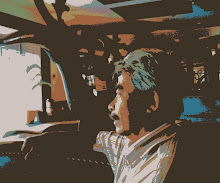Thus these notes I pen, to consolidate my understanding of the socio-economic history of Bintulu circa 1860's .
The political backdrop at this crucial times were as follows:
- The political sphere of control and influence of the Brunei Sultanate that owned the territory of Bintulu, was waning and nothing the local provincial chiefs in Bintulu or the Brunei Sultanate rulers could do. By this time it was a losing battle to reinstate its powers over much of its territories in Sarawak.
- This situation was worsened by the adventurous exploits of pirates and Iban excursions into the northern areas of Sarawak and the advent of Brooke's rule.
To start with I shall begin with the Malays in today's blog.
The Malays - socio-economy.
The provincial chiefs in the days of Brunei control , formed the aristocracy in Bintulu. A significant remnant of this in Bintulu today is in the name ofprimary school Sekolah Orang Kaya Mohammad . " Orang Kaya " is the title given to provincial chiefs bythe Sultan of Brunei. Mainly of Malay origin, these reps of the Brunei king were responsible for what we understand today as local empowerment, viz their authocratic perhaps to some amore of a despotic rule over the local population of Melanaus, a small pocket of Chinese traders, the rural or interior races like the Punans and Kayans. Please note that at this time the Ibans were hardly known in this part of the region as they had not reached Bintulu in their annual excursions to the northern sections of Sarawak.
They stayed in the kampungs, which is the nucleus of the community. The Melanaus who lived on both sides of the river then did imitate a lot of Malay culture like the Malay dress and later their religious beliefs.
In terms of economy, the Malay chiefs were tax collectors. And by virtue of this role were a political and economic link between the Sultan and the local people. The local people expected i n return to enjoy some amount of general leadership in the provision of law and order.
As local law enforcemet officers, there was strictly no written law as we now today see in the Malaysian constitution to be used or depended upon by the chiefs. However judgement could be administered based on the Arabic legal laws especially those preached by the Quran.
In all probabilty they provided some resemblance of social stability in Bintulu, though their application of justice somewhat arbitrary.
Using the river as their main method of transport, they would in days gone by , paddle upstream to colletc whatever taxes deemed for the Sultanate. This explains why the Malays are a mainly riverine population and having pockets of presence in small towns together with the Melanaus.
Thus gew a linear pattern of town development ie along the waterways seen even in today's Bintulu. While the Melanaus are well known fishermen , the Malays were mainly adminstrators or petty traders.
There is a pecliar incident in Odoardo's visit depicting a special character of the chiefs back then. In the words of Odoardo:
" The Pangerng Rio, a native of Bruni, had managed to become the factotum of Bintulu, and was employed bythe Resident in his communications with the inland chiefs. I learnt from the Tubao Kayans that Pangerang Rio had ordered there 2,000 small parcels of siri for the Government, but I am inclined to think that they were a personal compensation fo the trip"
However somewhere in his writings, Odoardo did mention that in general the " Malay is a perfect philosopher and most happy men I have ever know" .Probably this character have not changed much till today.
As a generaal conclusion to the socio-economy of the Malays then, I would like to relate that because of the frequent usurption of productivity by the chiefs, the local population seemed to have no incentive to work harder to grow their wealth because in those difficult times any economic surplus would be take away by the chiefs.
See how unmeaningful life was then to the "little people". Such incidences like elswhere made people like Karl Marx to describe the aritocracy ( the feudal lord/ the sultan ) as the oppressor and the proletariat or the subjected people as the oppressed majority. Such incidences like these as noted by Karl Marx were also seen albeit with local modification in Bintulu circa 1860's.
Throughout this period, the Malays being a towns people were exposed to business and trading activities within the town enivirons as well as outside trade. Pettytrading were carried out and were not as unbusineelike as what we Malaysians are taught today by the many failures of Malay entrepreneurs even those owning or managing public listed companies or GLCs.

No comments:
Post a Comment